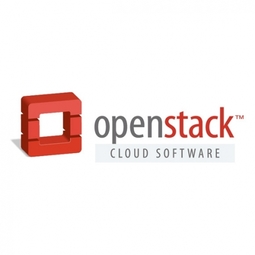Customer Company Size
Large Corporate
Region
- Asia
Country
- China
Product
- OpenStack
- Cisco AS
Tech Stack
- OpenStack Liberty
- CentOS 7
- Neutron
- Galera
- HAProxy
- RabbitMQ
Implementation Scale
- Enterprise-wide Deployment
Impact Metrics
- Digital Expertise
- Productivity Improvements
Technology Category
- Infrastructure as a Service (IaaS) - Private Cloud
- Platform as a Service (PaaS) - Connectivity Platforms
Applicable Industries
- Telecommunications
Applicable Functions
- Business Operation
Services
- Cloud Planning, Design & Implementation Services
- System Integration
About The Customer
Oriental Cable Network (OCN) is the largest cable TV operator in China, serving over 8 million households in Shanghai. The company generates $196 million in annual revenue and maintains a dominant position in the pay-TV market. OCN is known for creating an innovative, interactive TV experience. As a major player in the media and entertainment industry, OCN faces competition from IPTV service providers, prompting the need for infrastructure transformation. The company is focused on delivering high-value, feature-rich media and entertainment services, requiring a scalable and flexible platform to support its operations. OCN's commitment to innovation and customer satisfaction drives its efforts to stay ahead in the competitive market.
The Challenge
Facing competition from IPTV service providers, Oriental Cable Network (OCN) needed to transform its infrastructure into an agile, flexible, and scalable platform. The goal was to host dozens of operation and interactive systems for delivering new, high-value, feature-rich media and entertainment services. The transformation required openness, scalability, and continuity, leading OCN to evaluate open-source approaches. The need for a modularized, scalable, and automated hosting platform without proprietary APIs was critical. OCN's infrastructure transformation was driven by the necessity to keep pace with rapidly growing business demands and to make a fundamental change in viewing infrastructure both technically and operationally.
The Solution
OCN chose OpenStack to build a modularized, scalable, and automated hosting platform without proprietary APIs. The infrastructure was designed through an in-depth selection process, validated by proof-of-concepts, pre-production tests, and production tests. OpenStack components such as Keystone, Nova, Neutron, Glance, and Horizon were selected, along with shared services powered by technologies like Galera, HAProxy, and RabbitMQ. The setup includes three controllers and 12 compute nodes running CentOS 7 with OpenStack Liberty and Neutron with a distributed virtual router for production traffic. The workloads are based on a custom-built CentOS 6.5 image with specialized applications and tools for TV production. Over 30 virtual machines are currently in use, with expectations to exceed 100 in the future. Cisco AS played a significant role in helping OCN build up the platform's capability and the team's expertise during the transition.
Operational Impact
Quantitative Benefit

Case Study missing?
Start adding your own!
Register with your work email and create a new case study profile for your business.
Related Case Studies.

Case Study
Vodafone Hosted On AWS
Vodafone found that traffic for the applications peak during the four-month period when the international cricket season is at its height in Australia. During the 2011/2012 cricket season, 700,000 consumers downloaded the Cricket Live Australia application. Vodafone needed to be able to meet customer demand, but didn’t want to invest in additional resources that would be underutilized during cricket’s off-season.

Case Study
SKT, Construction of Smart Office Environment
SK T-Tower is the headquarters of SK Telecom. Inside the building, different types of mobile devices, such as laptops, smartphones and tablets, are in use, and with the increase in WLAN traffic and the use of quality multimedia data, the volume of wireless data sees an explosive growth. Users want limitless Internet access in various places in addition to designated areas.











